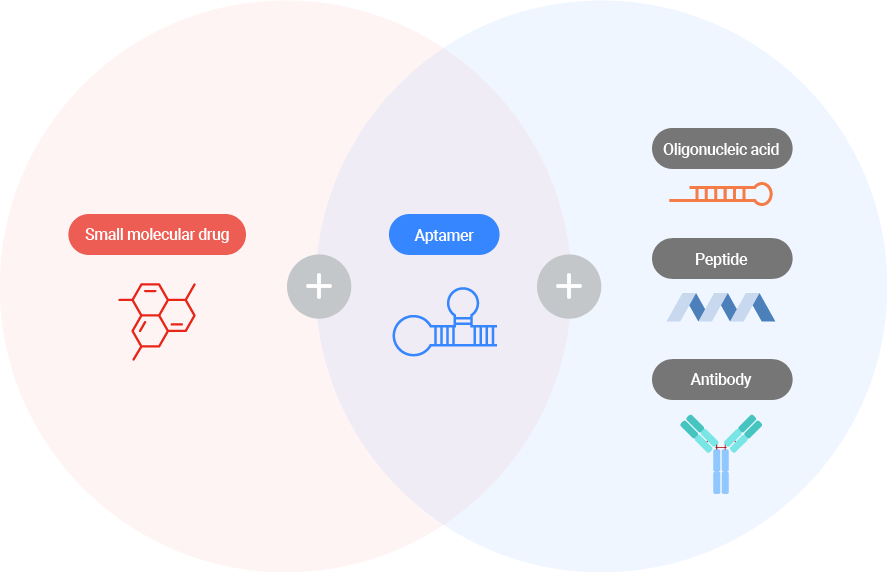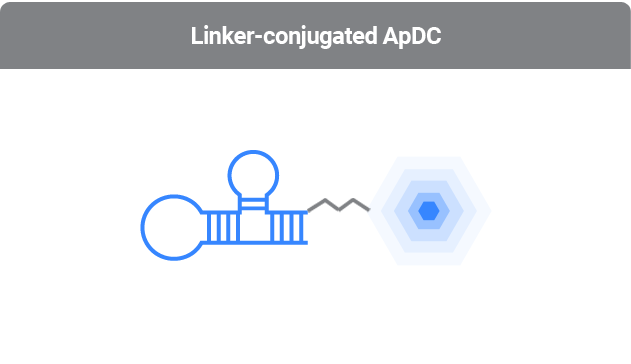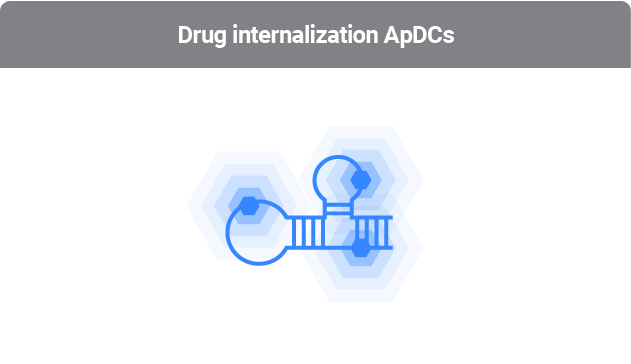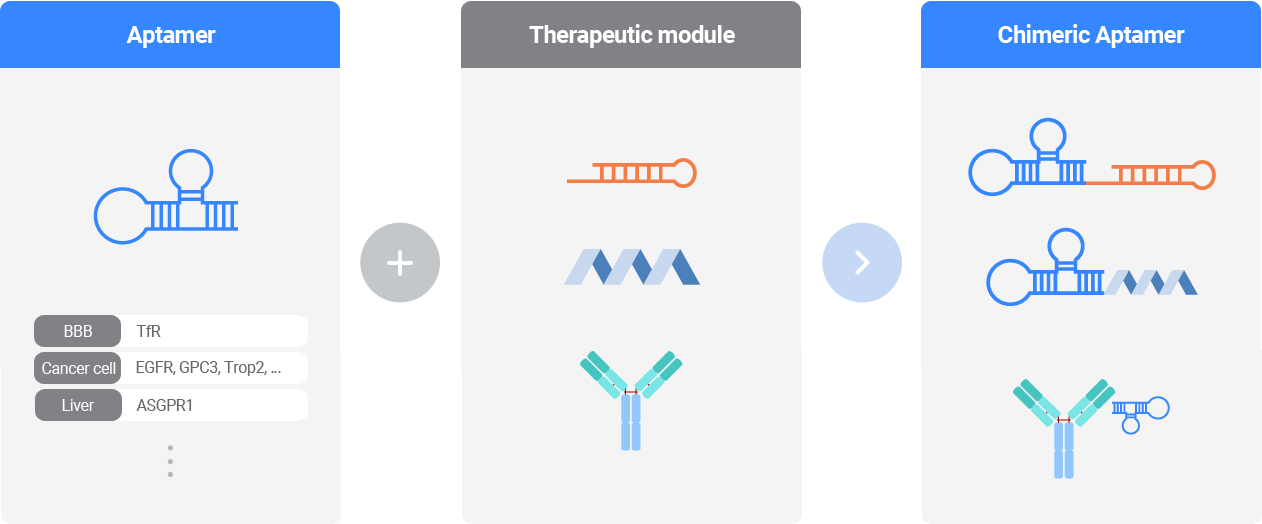Bifunctional Aptamer (BiFAp)
The Bifunctional Aptamer (BiFAp) is a platform for the development of innovative therapeutics that can have multiple functions by combining various drug modalities to an aptamer. In particular, aptamers selectively binding to membrane receptors give the payload (drugs) the target specificity, and the payload (drugs) can be delivered into the cells by receptor-mediated endocytosis.

Target specificity and strong binding affinity of aptamers lead to induce the activation of membrane receptors or causes receptor-mediated endocytosis. Therefore, target-specific aptamer can not only selectively deliver the combined drugs to the cells expressing targets but also get to a desired location inside cells.
BiFAp platform allows a variety of membrane-targeting aptamers owned by Aptamer Sciences to be utilized to deliver various therapeutic modalities to a desired location. Aptamers which are specific to tumor targets can be applied for safe delivery of toxic anti-cancer agents inside cells, and BBB (blood-brain barrier) shuttle aptamer can provide the solution to deliver drugs to brain across the BBB.
Depending on the types of therapeutic modalities, Aptamer Sciences is developing aptamer-drug conjugates (ApDC) binding to small molecule drugs and Chimeric Aptamers binding to large biopolymers such as antibodies, peptides and oligo nucleic acids.

ApDC (Aptamer Drug Conjugate)
- ApDC
- ApDC is an aptamer-drug conjugate in which a small molecule drug is conjugated to an aptamer. Recently, Gilead’s Trodelvy and Astra Zeneca’s Enhertu, as an antibody-drug conjugate, have been attracting attention on their groundbreaking therapeutic effects. Also, ApDCs that make use of aptamers with outstanding target specificity and selectivity allow more competitive drug development.
- Features
- The hydrophilicity and high tissue penetrability of aptamers enable improved therapeutic effects by penetrating tissues with higher efficiency - which are difficult to be penetrated by conventional drugs (e.g. tumor microenvironments). In addition, the ease of chemical modification of aptamers allows the development of various types of aptamer-drug conjugates (ApDCs).
- Application areas
- For small molecule conjugation, we are pursuing to develop the following two types of ApDCs. It is possible to develop ApDCs with various linker-payload (drug) conjugation technologies used in aptamers. The scope of linker-payload conjugated ApDCs applies to various drugs, and they can be designed in a way that drug release can be more finely controlled based on the selection of linkers.
- Aptamers can be developed into drug-incorporated ApDCs in which part of their nucleic acid sequence is replaced with small molecule drugs. Drug-incorporated ApDCs have the advantages of enhancing drug efficacy by introducing multiple drugs into one aptamer molecule, protecting the drug from metabolism and reducing manufacturing costs by simplifying the process of ApDC manufacturing with a single step.


Chimeric Aptamer
- Chimeric Aptamer
- Chimeric aptamer is an aptamer conjugate that combines aptamers with macromolecules including various biologics.
- Features
-
The selective and strong binding properties of aptamers result in receptor-mediated endocytosis.
In addition, aptamers have a wide scope of application as they can make use of various chemical reactions for the conjugation with therapeutic modalities.
- Application areas
-
Antibody-based drugs have excellent selectivity for targets and a longer retention time in the body, while they have low efficiency on the delivery to the tissues away from the blood vessels, and in particular, the efficiency of drug delivery to the brain is inevitably low. In the case of oligonucleotide-based therapeutics such as ASO and siRNA, which have recently been in the spotlight, fundamental treatments is possible by controlling the generation of disease-related causes at the mRNA level, but the efficiency of delivery into cells is extremely low, highlighting the importance of securing delivery tools.
By conjugating with our aptamers, such therapeutic molecules (oligonucleotides, peptides, and antibodies) can be effectively delivered into cells or organs.



